PART II – Nick and Tom
After coming to a dead-end as David with Tom, I decided to try another tack. I contacted a friend in Thailand whom I’d worked with previously on illegal wildlife trade investigations and asked her if she would assist with this online exotic pet probe. I’ll call her Noi, the fake name we agreed to use. She agreed. I gave her instructions of how to approach Tom using private messaging through the @exoticpetworld IG account. The account had recently posted this orangutan infant:

Noi made first contact:

I did not suggest that Noi describe the New York Times journalist and I as a ‘homo couple’, she came up with that herself. I only told her to say that two men who lived together in Phuket wanted an orangutan pet. Phuket is an island in the south of Thailand. I’d been there earlier in 2016 and saw two newly arrived infant orangutans at the local zoo that were being used as photo props, so thought that using them would be a good cover story.

Here he was asking about the zoo license again, so it appears that this is standard operating procedure. I wondered now whether some of this exotic animal supplier’s clients used zoos as a cover for illegal import. I knew that Thailand had some notorious private zoos such as Samutprakarn Crocodile Park & Zoo, Bangkok Safari World and Pata Zoo that had wild animals coming and going in and out of their facilities, often under questionable circumstances.






Exoticpetworld now sent six photos of orangutans and chimps, all from old Exoticpet88 posts. He told Noi that one was $12,000, including delivery to Thailand. He gave the name of his Thai associate and a Bangkok Bank savings account number into which I should deposit the down payment. Noi replied:




Tom of Exoticpetworld wanted the 50% deposit as a guarantee that this was not a ‘snooper’ operation or sting. He was calling the deal an ‘adoption’, to disguise the fact that it was an international commercial transaction and therefore illegal, as all CITES Appendix I cross-border trades require export and import permits, not to mention veterinary certificates, Customs clearances and tax declarations on profits. Noi thought that the apes might already be in Thailand. I asked Noi to send him a message in Thai asking this, which she did on 12th November. He answered with a ‘?’, which indicated that he wasn’t Thai and could not understand it. Noi asked Tom how delivery of the ‘kid’ could be made. He replied:

Tom was pressuring Noi to speak on the phone, but she was afraid she would blow it and refused. I asked her to try to set up a meeting on 18th November in Bangkok to inspect the orangutan. The NYT journalist was ready to hop on a plane once I had everything set up.

I decided that it was time to go to Thailand. I emailed Edwin Wiek of the Wildlife Friends Foundation Thailand to explain the sting operation and asked if his rescue centre could take the orangutans after seizure, but he never replied. I was in communications with the Freeland Foundation, based in Bangkok, and they agreed to organize Thai police involvement and collaborate in the sting. They had done this type of thing previously with a slow loris trafficking gang.
I arrived in Bangkok on 16th November, bought a local Thai mobile network SIM card and contacted Tom’s +855 81 number via WhatsApp:
Nick: Hello I am person who asked anxxxxxxxx32 to look for orangutan for adoption
[Next day]
Nick:: Helloooo anybody home?
Tom: Hello sir
Nick: Oh you’re so polite, that’s nice. I’m just so tired going through Noi to agree on getting our lovely new kid. I talked it over with my partner and he is so suspicious and careful he’s like an old lady. Is there anything you can do to make him believe you will give us the baby when we deposit the money? We don’t know you or even where you are. Maybe you will run away with our money. You know there are lots of people who do nasty things like that. I’m not saying you do. I hope you understand. We really want to get Otan as soon as possible, we even bought baby clothes already

Nick: Not really. Yes I know. But we would really look after it like a real child. I googled all kinds of things about what orangutans eat, what kind of diseases they get and all kinds of things. Our house girl will bath it every day. Any advice you have please tell me
Tom: They are easy to take care . but sometimes they could get moody …just like kid.
Tom: Are you now in phuket ?
Nick: We had a cat for a really long time but it ran away. It was really moody. We don’t mind moody. Yes am in Phuket
Tom: I got a good friend in phuket . he’s retired wealthy aussie hippie .may be I should arrange a meeting with him to confirm you and me are legit person .
Nick: Let me ask my partner, he’s a shy guy. Where in Phuket does hippy live? Can we meet him in Patong?
Tom: Let ask if he’s in phuket now . where are you guys from ?
Nick: I’m from Canada my partner is an American. But he is very nice for an American not noisy and pushy like those foul rednecks that support Trump
Tom: Trump is a cancer
Nick: Worse
Tom: Sorry buts no other word .
Nick: Trump hates people like me
Tom: My brother used to study at [name of school] in Vancouver .
[I had never heard of the school, but googled it and replied]:
Nick: Oh wow!! That’s a good art school. Is he doing design? What kind?
Tom: Film director
Nick: Exciting! What kind of films?
Tom: Very indie
Tom: Let me call u tonight , sir
Nick: Best kind. Ok will talk later I have to go out now anyway
Tom: Ok
[Next day]
Nick: Good morning
Nick: Helloooo
Tom: Hello sir
Tom: I have spoken to my friend in phuket but he’s in Dubai now
Nick: Ecuse my delay I was swimming. So what do we do?
Tom: Instagram : XXXXXXXX007 [It was an Instagram account of a very wealthy Thai man who owned a chimpanzee pet. He seemed to be a jet-setter who travelled to Europe and the U.S. with his pretty girlfriend and he owned some very expensive cars. There was no indication on his Instagram or Facebook account of whether he worked or not and there was nothing that suggested he was in the exotic animal business. Maybe Tom had sold him the chimp].
[Next day]
Tom: Hello
Nick: Good morning Tom how are you?
Tom: This afternoon I will send you photos of one boy n one girl for you to decide .
Tom: You have seen that one IG account I sent you last night, Nick ?
Nick: Yes I looked the chimp looked big but nice and he seemed very happy
Tom: Yah . he’s very lucky ape.
Nick: I’m so excited can’t wait to see photos
Tom: Ok.
Tom: Here we go , Sir
Tom sent these:




Nick: Incredible!!! When can we see?

Tom: Balance upon health check at local vet .
Nick: Ok will let you know asap
Tom: Thank you , Sir
Tom: My suggestion is as a couple if you may want to breed them .
Nick: Oh I never thought of that. Another thing to discuss. My partners not here now I’ll see him in a couple of hours but will let you know tonight cause I don’t want them going to China
Tom: Noted
Nick: To save time I’m going to see my partner I know where he is
Nick: I sent him the photos he’s thrilled!
Tom: Ok.
[Tom called me on WhatsApp audio to warn me not to share the photos or discuss what we were doing with anyone. I told him I wouldn’t. He asked me where I came from in Canada, I told him a small town in Alberta. He wanted to know if I would pay the 50% deposit, I said I would ask my partner. I contacted the NYT journalist and asked him what name he wanted to use. He said ‘Jeffrey’. We resumed on WhatsApp text]:
Nick: Don’t worry not sharing or telling ANYBODY
Tom: Thank you
Nick: Am so tired. Jeffrey insists since we don’t have any assurance that the kids would be delivered that he’s only willing to deposit $1000. Or if they are not too far away we could go and take money with us. We see them, pay 50% and see them shipped to Phuket. Sorry he’s very difficult
Tom: Completely understood from your point of view although if the kids are local and native in Thailand then we can do like jeffry said . but they are not local breeded and have to be shipped to Bkk from far away so since this is our first contact it’s not easy for both of us .
Tom: Are you guys looking for one or a couple ?
Nick: We decided on two, depending. Are the girl and boys related? Or different parents? If unrelated we can take girl and boy. This might make them more stable when they get older. Assuming they get along (:
Tom: They are from different parent and not related .
Tom: Let me figure what is the most fairest solutuon for both of us ,Sir .
Nick: Ok take your time


Tom: I will keep them both for you .
Nick: Thank you tom you are very kind
Tom: My pleasure . i believe you and jeffey will take good care of them .
Nick: Promise
Tom: Hi Nicolas . I have spoken to my breeder on your terms . This is the best thing I can work out with him . he will accept 100,000 THB deposit for one couple of male and female . once they arrived bkk we can go to see the vet together . after the health check you could pay the balance . then you could either take them direct back to phuket or we can arrange shipping for you . please discuss with Jeffry and let me know please .this is the best solution I can come across with him .
Tom: If placing deposit tomorrow you can come to Bkk next Friday for pick up , Sir .
Nick: Deposit is in bank in Bangkok the one you gave before?
Tom: Yes , Sir .
Nick: Tomorrow Sunday will do Monday
Tom: Ok
Tom: Thank you for trusting me
[I did not want to turn over any money to wildlife traffickers for ethical and legal reasons. But previous negotiations with wildlife traffickers always ended at this point. Not a single one would agree to meet for an “inspection” or any other reason I could think of using as a cover story, without money up front first. Without a physical meeting it was impossible to set up a sting.
I discussed it both with my project sponsors and with people at Freeland. Thai baht 100,000 was about USD 2,850. Was it worth that much to put a major wildlife trafficker out of business? When trying to set up the sting in Indonesia I had been in communications with an Indonesian NGO. They had pulled off a sting that netted two traffickers, but it had cost $3,000 in lost deposit money.
Tom said he was coming personally to Bangkok and that we would meet. Freeland assured me that he would be arrested in the veterinarian’s office when the health check was made and the transaction concluded. Tom would be caught red-handed with the orangutan infants and cash payment, open-and-shut case. Jeffrey the NYT journalist would be there to witness and write about the whole affair. I wrote my sponsor that it was “high risk, high gain”. He replied, “Go for it.”]
[Next day]
Tom: Kids are already on the move to Bkk , Sir .
Nick: Fantastic. Where do we meet in Bangkok Friday?
Tom: I will inform you again which doctor my agent will be contacting.
[The ‘doctor’ was the vet who would do the health inspection. We needed to know as early as possible who this would be and where he was located in order to arrange the details of the sting.]
Nick: Ok
Tom: You have to prepare and start buying powder milk and other baby stuffs
Nick: Will do. Any special kind?
Tom: Any baby milk will do the job
[I flew to Phuket so I could deposit the down payment in a Phuket bank, strengthening my cover story.]
[Next day]
Tom: Please do send me your bank deposit slip once payment has being instructed, Sir .
[I haggled more with Tom, trying to get out of making a bank deposit. We’d brought on board a Thai staff member of Freeland, a retired senior Royal Thai Police officer, to act as a contact in Bangkok with a Thai associate of Tom’s, the man in whose bank account I was supposed to make the down payment deposit. I said a ‘friend’ (the Freeland Thai staff member) would leave the 100,000 baht cash at the vet’s office, as we needed to know where it was. Tom was not pleased.]
Tom: Please tell your friend you are not getting baby hamster from a zoo shop.
Nick: Oh Tom I’m so sorry I tried to convince him but he says if deposit left with your vet then no risk to you.
Tom: I understand you friend s idea but also the things is no vet would to get involve in this kind of business .
Tom: How do you want me to proceed , dear Nicolas .
Tom: Seller could disappear with money…no objection but also buyer could reject to take as well. This happend to be few times with Arab peoples.
Tom: I am a good Muslims
[Two more facts learned about Tom, he was not Arab and he was Muslim. This pointed more strongly than ever to him being Indonesian or Malaysian. He also admitted that ‘this kind of business’ was so shady that no veterinarian would get involved in it.]
Nick: I want to be fair of course. I’ve been arguing with my ex friend and Jeffrey about it. We won’t reject if kids are healthy. Even if they have small health problem we can still take if it’s treatable. Are you with kids?
Tom: No , Sir . I don’t have them with me . should I have my agent to call you thai friend and work out somethings ?
Nick: I thought you were coming with them and would meet us in vets office in Bangkok? No?
Tom: Yes ,we will meet .
Tom: But I want to solve the deposit issue at first cuz they are already on the way.
Tom: Otherwise I have to return them back first until things are set .
Nick: My friend said he can talk to your agent but he’d prefer doing tomorrow is that alright? Maybe he can give deposit to him
Tom: Ok
[I received an email from Freeland informing me that they had prepared a confidential report for me containing ‘closed-source and open-source information’ to help me decide on the best course of action. They would give it to me at a meeting we had scheduled in the Foreign Correspondent’s Club in a couple of days. Freeland also wanted a screenshot of my communications with Tom to pass on to the Natural Resources Environmental Crime Suppression Division of the Royal Thai Police that they could use to open a case file. I sent a few which showed Tom giving the prices and asking for a 50% deposit.]
[Next day]
Nick: Good morning. What number should my friend call? He has agreed to pay the deposit for me. I’m coming to bkk tomorrow
Tom: Ok. Let me get his number for you .
Tom: It’s +66 651xxxxxx.
Tom: His name is Ton
Nick: Ok wonderful. My friend is Kuhn Lee, I’ll pass on number
Tom: Ok
Tom: Jelly fish
Nick: What?
[What did jelly fish mean? Was it some sort of code word, or just a typo? I sent Ton’s number to Freeland’s Thai undercover staff, whom we’re calling Kuhn Lee (Mr. Lee). Lee called Ton’s number and was told that now the ‘kids’ were arriving Sunday, not Friday as previously agreed.]
Nick: Lee said kids arriving Sunday now what happened?
Tom: It’s always five working days after receiving the deposit .
Tom: And we don’t have transport connection everyday .
Tom: Today is Tuesday afternoon and I am still waiting for your deposit .
Tom: Kids were send off Sunday evening but last night I let them stop before crossing border
Nick: I don’t know why Lee didn’t make arrangements to pay deposit with Ton I asked him to do that. Lee is a bit difficult sometimes. Lee says he will give 100,000 cash to Ton after work tomorrow. Could they meet in bkk somewhere? Because kids not coming until Sunday I won’t come until Friday now
Tom: You got the bank account , Sir.
Nick: Ah ok he puts in bank. Ok I’ll tell him
Tom: Thank you
[Now, what to do? I had come to Phuket to establish my cover, but hadn’t had to prove it yet, Tom did not seem concerned where I was. I decided that if a bank deposit had to be made, I might as well do it here in Phuket.]
[Next day]
Nick: Good morning Tom I hope you are doing fine. I decided to deposit the 100,000 baht myself here in Phuket. What day will the kids arrive? I hope soon. You said they were already almost here. I don’t want the kids to suffer too much in a car or whatever. Is someone feeding them properly and giving them water? Can you send a photo so I can see they are alright. Jeffrey wants to see. Thank you
Tom: Hi Nicolas . if receiving your deposit today they should be in bkk on Monday at latest and don’t worry they are all well treated.they stop over near Malaysian border at my courier farm .please notify me once you paid in so I can continue the trip .
Nick: Why does it take so long if they are so close?
Tom: Malaysia Indonesia border
[I looked at a map to reconfirm what I thought – there is no land border between Malaysia and Indonesia, except on Borneo island.]
Nick: There isn’t one what do you mean?
Nick: You mean on Borneo?
Tom: No
Nick: Where else is there a border?
Tom: You are asking typical snooper question .
Nick: Tom I’m not a snooper but you’re saying strange things. I’m not stupid
[I was beginning to worry that this was a deposit scam, not unusual in the nefarious world of wildlife trafficking. Many animal photo ads on e-commerce or social media sites were simply just downloaded from the Internet, the person posting the photo did not actually have the animal. After receiving the deposit, the ‘seller’ was never heard from again.]
Nick: I’m in front of the Patong Bangkok bank right now I can even send you photo. It doesn’t open until 10
Tom: No problem
Tom: It’s just few minutes
Tom: Call me
Tom: Bad signal
Nick: Yes
Tom: There are no land border
Tom: But by boat
Nick: Except in Borneo I know my geography
Tom: Johor baru
[This was at the tip of the Malaysian peninsula opposite Singapore island. The otans must be coming from Borneo or Java, if they were actually passing through Johor Baru.]
Nick: You promise on the Prophet (peace be upon him) that you send kids? You said you’re a good Muslim
Tom: Yes , Sir
Tom: I promise
Nick: Ok thank you Tom I’ll deposit now. I’ll have $17,150 for you in cash in Bangkok. Give me address when you can of where we meet. We will take kids there I’ve arranged transport
Nick: You want cash right?
[I hoped the offer of this much cash would be enough to lure Tom to Bangkok.]
Tom: Ok
Nick: Can we use your cage or we buy one to bring?
Tom: No cage
Tom: They go in basket
Tom: I will arrange for u
Nick: Ok am in bank waiting for person
Tom: Ok
Nick: Here is deposit receipts


Tom: Ok. Thank you .
Tom: No need to worry , Sir . see you on Monday .
Nick: Thank you my friend
[I felt terrible depositing that money for the use of wildlife traffickers, but the thought of putting them out of business gave me the motivation to do it and carry on. The Exoticpet88 gang had captured and sold thousands of endangered animals and birds from at least 2012 up to now, and Tom’s IG account was posting animals for sale again, such as the pair of orangutan infants below. Were these the two ‘kids’ now on their way to Bangkok?]

[I returned to Bangkok and that night met with Freeland people at the Foreign Correspondent’s Club. They did not give me the report as promised, which apparently contained useful information, because of reservations held by Khun Lee. I was told they would give me the report when the case was closed. What good would it do me then? This was the first of several seemingly counter-productive and illogical acts by Khun Lee.
The Royal Thai Police were on board and we would hold a strategy session in a couple of days to lay out the detailed roles of each person. Jeffrey had made arrangements to fly to Bangkok on Friday.]
[Next day]
Tom: Expect your kids to be in bkk on Sunday at latest .
Tom: Will update .
Tom: Be prepared so sleepless night ….
Nick: Thank you thank you I was going to contact you tomorrow I didn’t want to hound you. We still meet Monday?
Tom: I think yes
Tom: Let me keep you up to date every evening
Tom: Should be OK
Nick: I’m so excited! I can’t wait. Thank you so much
Tom: Did you bought milk and etc.
Tom: Hot water boiler
Tom: Pampers
Tom: Three or four milk bottles
Tom: They will need the bottles every three or four hours
Nick: Not yet but now you reassured me so we will. I looked at pampers (we call them diapers) but not sure which ones to get
Tom: I will get for you
Tom: They are about 3-4 KGs
Tom: So it new born size
Nick: There are also different formulas for different ages, will buy the ones for 1 year old. Ok for pampers small ones
Tom: Welcome sleepless night …. For the next few months …
Tom: Yes
Tom: I think it’s fine
Nick: Oh dear I hope they don’t cry like human babies
Tom: Not like that…..
Tom: Worse…. Hahaha….
Tom: Just kidding
[I was bonding well with Tom, building trust, he seemed as excited as I was pretending to be about the imminent ‘adoption’ of my new kids.]
Nick: Whew good. NO oh good kidding.
Tom: I always enjoy watching them sleeping
Nick: We can’t wait.
Tom: Yah ….
Nick: Should they sleep in a baby crib or what?
Tom: I know that feeling
Tom: No need
Tom: Mine always use to sleep with me n my wife has n the same bed
[More information about Tom, he owned otans himself and he was married.]
Nick: Really? Ok we’ll try that
Tom: My wife will buy some nice baby dress for your kids .
Tom: They will bond to you and jeffey for the next couple of years
Nick: Oh thank you Tom that’s so kind of you. Jeffrey and I have been talking about what to get you
Nick: We’ll spend lots of time with them and hug them a lot
Tom: No need Sir . me n my wife will come to visit your kids in phuket from time to time .
Tom: Speak you tomorrow .
Tom: Yah ….
Tom: Happy happy
Nick: Ok sleep well
[I had to remind myself that this character was responsible for the capture of innumerable orangutan and gibbon babies in the forests of Southeast Asia and selling them into slavery, not to mention all of the other animals and birds from all over the world that showed up on their IG pages. I wanted to see him behind bars.
Freeland emailed me, they found the Facebook account of the person who owned the bank account I’d deposited the down payment into. They had his address as well.]

[The police had obtained the bank records of the ATM use of the bank account owner and it showed that within 24 hours the entire 100,000 baht had been withdrawn.]

[Next day]
Nick: Hello Tom any news?
Tom: On the way , Sir
Nick: Ok thanks
[Next day]
Tom: Your kids are now at Malaysia/Thailand border waiting for transfer courier
Tom: If lucky then tonight ID not tmr
Nick: Oh my!! Can’t wait!! Thank you Tom!!
Tom: Please book your flight after my confirmation . no need to book in advance , Sir
Nick: ok
Tom: Also you told me you want to take back your kids by yourself ?
Nick: Yes we’ve hired a car and driver in bkk
Tom: Are they any control on the way back to phuket ?
Tom: How many hours drive ?
Nick: Not that I know of but even if there is we can put a blanket over kids. I heard 12 hours
Tom: Ok
[Next day]
Nick: Hello Tom how are things going?
Tom: If my courier can cross border in to Thailand tonight it will arrive Bangkok tomorrow . he is checking if his border officer he work with has got his shift today , Sir . if he can cross he will call me and I will inform you ASAP.
[Aha! Another key bit of info, they had a corrupt Thai border officer working with them, this was common practice with wildlife and other illegal product smugglers.]
Nick: Ok good luck but come soon! Jeffrey is going crazy
[As was I, I had to leave Thailand soon as I had another operation underway on another continent that absolutely required my presence on 30th November. It was now the 27th. Jeffrey and I went to Bangkok Safari World this morning and I introduced him to the orangutan show, in which thin, bedraggled orangutans simulated a rock band, with a bikini-clad go-go dancer, and a boxing show. On the taxi drive out Jeffrey was on the phone with a Congolese army general he was interviewing for a story on Joseph Kabila, the DRC president. The general knew that Kabila kept a pet chimpanzee at his farm outside of Kinshasa, in answer to a question Jeffrey threw in at my prompting.]


[That night we held a strategy session in my hotel room with three Freeland staff – R. and two former senior Thai Royal Police officers (E. and Khun Lee) – a current member of the Natural Resources Environmental Crime Suppression Division (whom Jeffrey dubbed Inspector X), a cameraman to record everything, Jeffrey and myself.]

“Khun Lee” had drawn up an organizational chart of the actors and locations for the strategy meeting, but it made no sense to me and had nothing to do with what we needed to do when the exchange meeting would be held in the vet’s office.

Inspector X, designated to make the arrest, the cameraman and “Khun Lee” in my hotel room.
[Next day]
Nick: Good morning Tom hope you are well. Jeffrey and I are In Bangkok now did it go well at the border?
Tom: Hi . tonight I will arrive thai side . may be my agent can let you video chat with you boy and girl .
Tom: Do you have Skype ID ?
Nick: I don’t have Skype but maybe I could create an account. We can meet tomorrow then?
Tom: Yes , pls create one . tentative arrival is tomorrow morning in bkk .
Nick: So excited can’t wait. So we meet tomorrow we don’t want to stay in Bangkok. What time?
Tom: Tonight my courier will inform when they start departure . where do you stay in bkk ?
Nick: We’re in sukhumvit
Tom: Ok
Nick: Nana area
Tom: You can send me your address and location my courier will come to see you there and bring the kids .
Nick: You said we meet to get health check
Tom: Yes , he will take you to see the vet together .
Nick: So he doesn’t bring kids here? Don’t think we can bring into hotel
Tom: No problem . can go in with baskets . which hotel is it ?
Nick: [name of hotel]
Tom: Oh …they got nice congee.
Tom: It’s next to soi nana .
Nick: Haha! Yes I tried it. This morning I had nasi goreng
Tom: Great . so late late tonight I will update , Sir .
Nick: Wonderful we await your call with baited breath
Tom: Waiting for courier
Nick: Oh where are they?
Tom: Hatyai
[This was disappointing as Hat Yai was only just across the Malaysian border in southern Thailand.]
Nick: So far! So we meet tomorrow
[Tom sent this photo now. The date and time were correct]:

Tom: Hi . my local courier just tried to contact you on your mobile .
Tom: What’s your room number , Sir . he wanted to stop by and explain you how to meet and how to take care of your kids .
Nick: Am out to dinner with Jeffrey will be back at hotel in about an hour
Tom: Ok, let know when you are back . what’s your room number ?
[I couldn’t give him my room number as then he could check the name of the occupant and discover my real identity.]
Nick: We meet in lobby not room
Tom: Ok
Tom: Is it possible to have noi coordinate with my man because his English is not good .
Tom: My agent
[Tom sent a photo of his agent. He didn’t look Thai, more Central Asian or Middle Easterner.]
Nick: Noi is not here we’ll just meet him now in Hxxxxxxx bar we’re there
Nick: He goes into lobby and take elevator to B level
Tom: Let contact him again , Sir . he said he went to front desk and asking for Mr. Nicolas Shies but they couldn’t find you on the check in database so he left .
Nick: Well we are here. My name is not Schies
Nick: Or shies
[I had scribbled a fake name on the bank deposit slip.]
Tom: Ok. It was shown on the paying slip so I told him to ask for you sir .
Tom: Your kids will leave tonight around midnight and will probably get in late afternoon , Sir .
Tom: You brought milk and other stuffs or should he buy for you ?
Nick: Is the courier coming?
Nick: He doesn’t need to do anything
[Tom was trying to establish what we looked like and if we were real before making the delivery meet.]
Tom: I am trying to call him now
Tom: I couldn’t get through his number so I think he is on the way back home .if you don’t see him at the lobby waiting then tomorrow.
Tom: When kids arrive I will notify you , Sir .
Nick: Ok we wanted to buy him a beer
Tom: Haha very kind . I will have some beers in phuket soon with you two . havent been there for so long .
Tom: In fact hatyai is on your way back to phuket , isn’t ?
[Tom called now at 10;30 p.m. by normal mobile phone service and asked me if I wanted the kids delivered to Phuket. I said that Jeffrey and I were in Bangkok now and we had a car and driver already booked, plus we wanted the kids’ health cleared by a vet before paying the balance and taking delivery. I asked if Tom was going to meet us in the morning at the vet’s office with the kids. He said Ton his agent would get hold of us in the morning with instructions.
It was after 11 p.m. on 28th November, I had to leave the next night to go where I needed to be on the 30th. Jeffrey and I discussed it in the hotel bar, wondering if Tom’s agent wasn’t still around. I went to Thailand thinking that the exchange meet could be made on the 18th. Ten days later it looked like I would not be part of the sting. Jeffrey had to leave the night of 1st December to be at a Bar Mitzvah in Chicago, his home town, on 3rd December. I sent Tom another WhatsApp message.]
Nick: Tom I’ve been talking this over with Jeffrey and we decided you’re playing games with us. You keep changing the story. We have to meet tomorrow and take the kids. We have the money so let’s just do this
[No reply. At 11;30 p.m. I sent another message.]
Nick: Tom can we talk?
[No reply]
[Next day, 29 November]
[I called Tom’s number in the morning, no reply. I had to leave that night so decided that it was too late for me to take any active part. I informed Freeland that they should try to conclude the sting either today or on the 30th with Jeffrey in the vet’s office, as originally agreed. I turned over my Thailand SIM card to Freeland for them to continue using it for communications with Tom, which of course could only be text messages. That afternoon I received an email from R. my contact at Freeland:
Hi Xxxx,
Just wanted to let you know they we will actively pursue the case through Mr. Lee. We hope the fish will take the bait and we have a successful resolution to this case.
Will keep you updated with all ongoings.
Kind regards,
R.
I replied that I was still keenly interested in the case and would be willing to help out any way that I could, and for them to keep me updated.
A few hours later I was in a plane flying to Africa, hoping that Freeland could pull off the sting with Jeffrey present.]
End of Part II







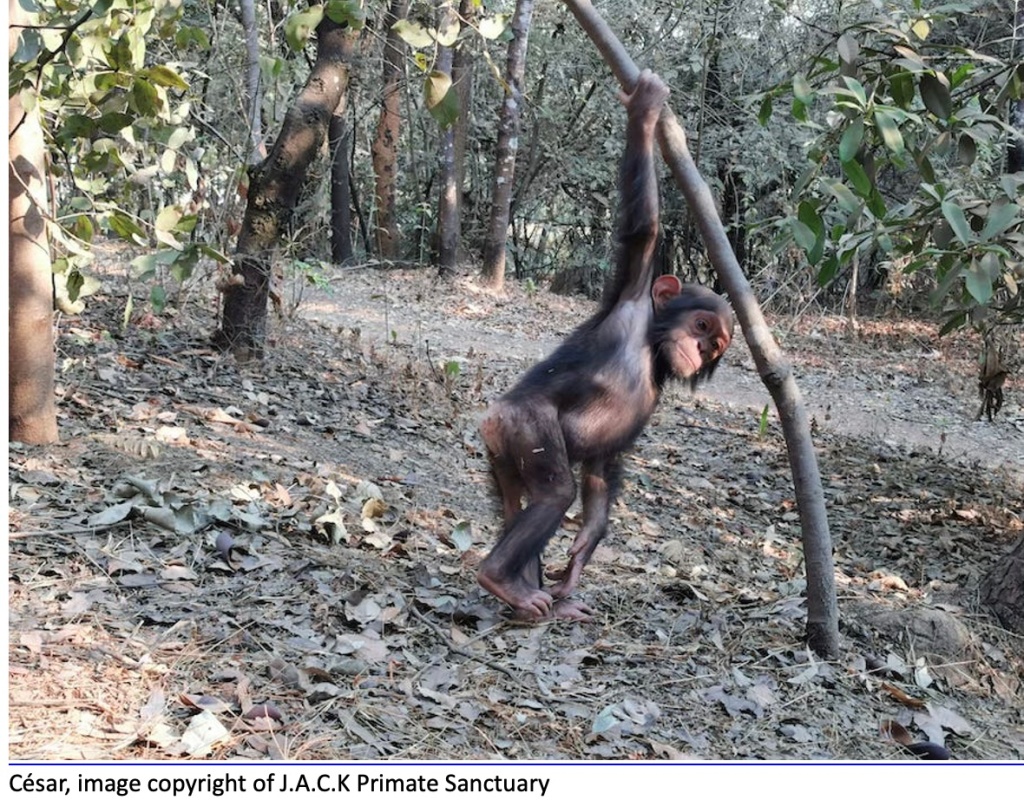






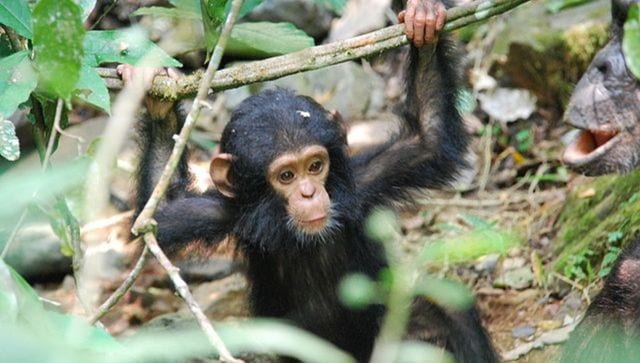
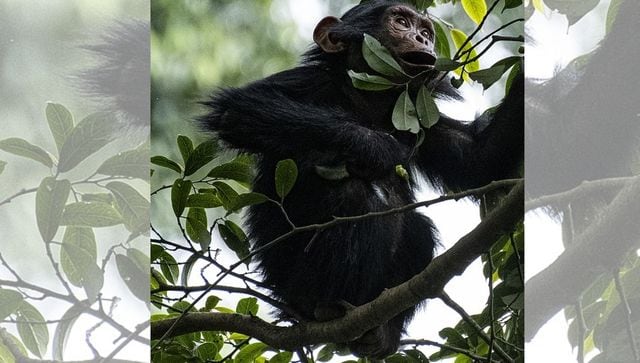
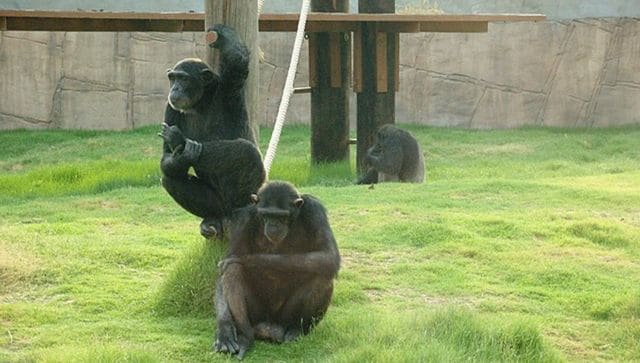
































































































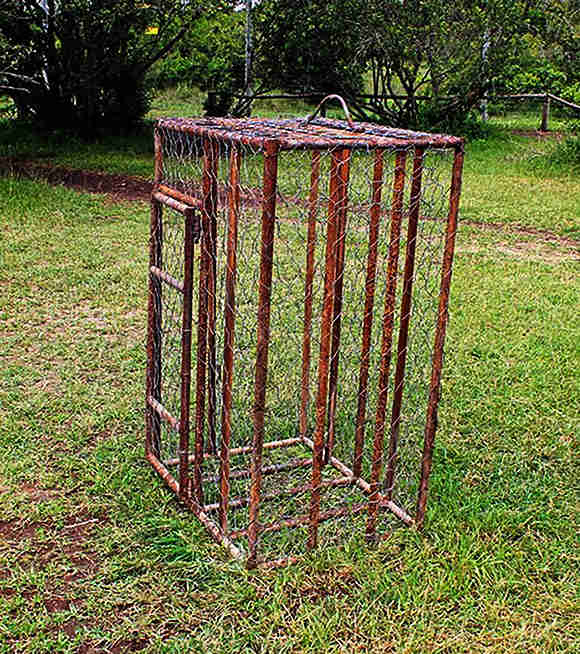
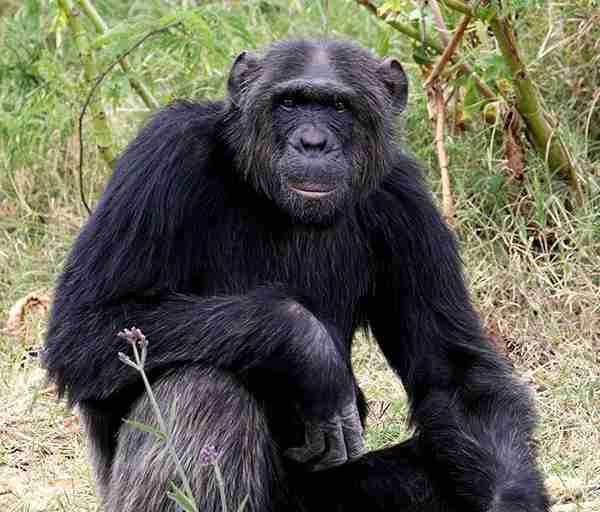



















































































VIEW THE COMMENTS